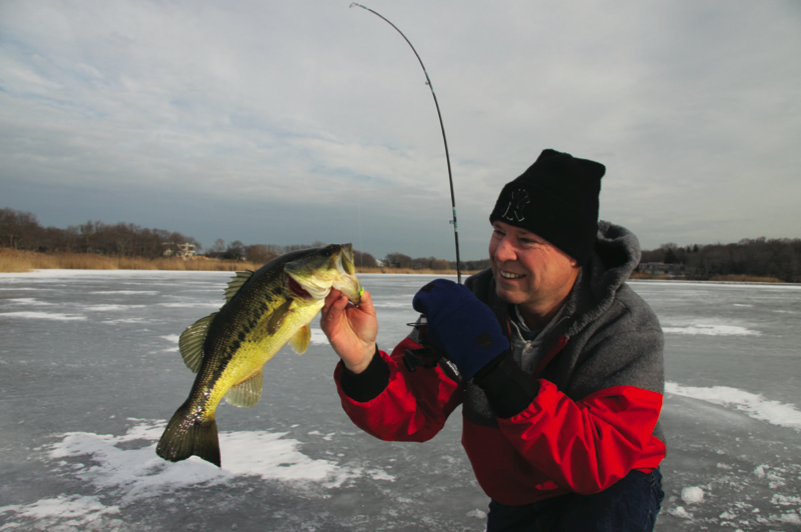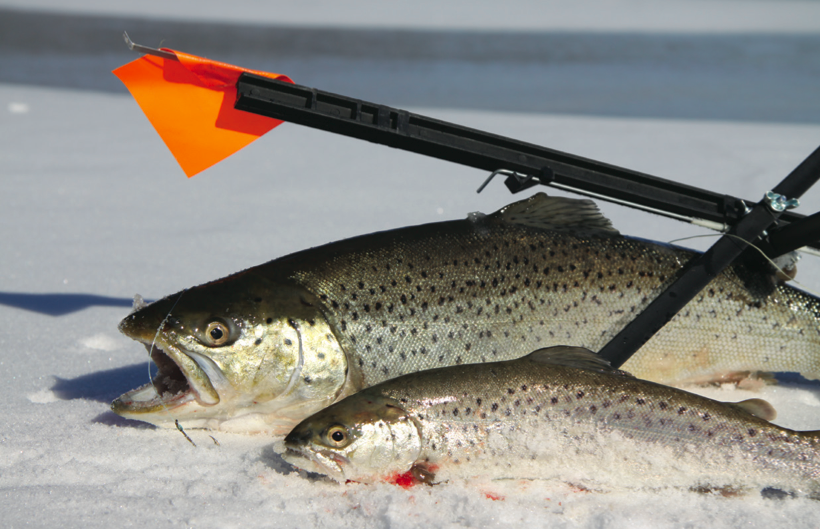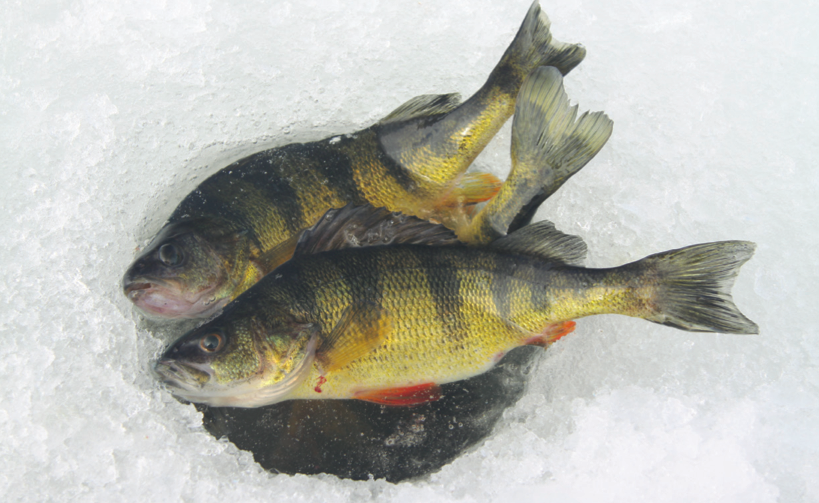Despite the relatively mild winters and generally shallow lakes, Long Island offers some pretty decent ice-fishing possibilities. Local hard water fans know that trout, bass, pickerel and a variety of panfish including yellow perch, white perch, crappie, sunfish and even walleye can be pulled from several lakes and ponds. The key to success is to work waters that have enough depth to allow the fish to suspend in densely packed schools two to four feet above the bottom. Among the more favored hot spots are Lake Ronkonkoma, Wildwood Lake, Laurel Lake and Fort Pond. Lesser know possibilities that may also be worth exploring include Patchogue Lake, Fresh Pond in Montauk, Fresh Pond on Shelter Island, and Deep Pond in Wading River.
Of course, before you head out to any of these icy hot spots, you’ll need to put safety foremost in your mind. Make sure there is a minimum of at least four inches of solid ice before heading out to drill your holes, dress in layers to provide maximum warmth, bring along a warm hat, waterproof gloves and boots, and get off the ice immediately if you find any area you fish is starting to deteriorate. Always keep in mind that fishing is fun, but not so much so that it’s worth risking your life.
With the cautionary statements out of the way, following are a few tips that should help improve your ice-fishing scores on local lakes and ponds. Remember to get out as soon as the next big freeze sets in because hard water days around here are at a premium. You’ve got a six-week window from the start of the New Year through the middle of February in which you’ll find suitable ice here on Long Island, before and after that, anything else is a bonus.
FISH THE SLOPES
While it is sometimes possible to find the fish schooled tightly over the deepest water in the lake, you are more likely to connect if you work slope areas. I like to concentrate my efforts along sharp slopes that run from four feet of water on out to depths of 12 to 16 feet. Start by drilling one hole at the shallow end of the slope and then drill a second hole at the deeper end. Now, fill the area between with another hole or two. If the slope area is wide enough, stagger your holes to the left and right as you move into progressively deeper water so that you can cover more area. I like to set a tip-up in each hole completed before starting to drill the next entry point. Once all the holes are completed and the tip-ups are set, I go back and jig in each hole, starting from shallow to deep, to see if a little more active approach will spark the action.
KEEP LURES SMALL
For fast action with panfish, small lures are the way to go. Although there are several lures designed specifically for ice fishing like the Swedish Pimple and Rapala Ice Rap, I’ve had my best luck using white, yellow or chartreuse, two-inch long, Mr. Twister grubs or Berkeley Power grubs. Tip these with a mealworm or wax worm, allow the lure to settle to the bottom on four-pound test line, and jig it to the surface very, very slowly. Make your jig’s move gently, and note how far from the bottom or below the ice the first strike comes so you can quickly return your lure to the proper depth and maximize your fishing time.
KEEP MOVING
If you plan to use a jig pole to work tiny grubs or small ice-fishing spoons through the ice, alternate your effort from hole to hole until you find a winner. Jig poles are ideal for killing time with panfish while you wait for larger trout, bass or pickerel to show. Some anglers, however, make the mistake of camping out at one hole all day long while they wait for the tip-ups to get the job done in the other holes. You’re better off moving around from spot to spot and seeing what you can work up. I rarely spend more than ten minutes jigging at any hole if I don’t get a strike. Be sure to remove the tip-up from the hole you are jigging, otherwise you’re sure to tangle the line on the very first strike. You can also use the jig pole to probe other open holes that have been left behind by other ice fishermen.
FISH EARLY, FISH LATE
Whether it is the middle of the summer or middle of the winter, fishing is usually best around dawn and dusk. It would seem to make sense that ice fishing prospects would be best at mid-day or during the afternoon when the sun has had some time to heat the water, but that simply isn’t the case. In my experience, at least, the first two and last two hours of daylight bring the best results – especially where trout, bass or pickerel are concerned. Get out early, or get out late if you want to see the best action of the day.
TRY SOMETHING NEW
Because ice fishing isn’t really a big deal with most Long Island anglers, there is plenty of elbow room on the water. There is also plenty of opportunity to experiment. While the suggestions above are tried and true, I think we are just starting to scratch the surface around here when it comes to hard water prospects.
The walleye now growing to several pounds in Lake Ronkonkoma and Montauk’s Fort Pond certainly offer a new and exciting target worthy of consideration, and Deep Pond in Wading River has given up trout to six pounds through the ice yet few people have tried this location. With trout season now open on a year- round basis, the west end lakes and ponds that receive a fall stocking might even be worth a try.
No doubt there are still plenty of secrets to be unlocked in the years ahead for Long Island’s motivated hard water fans. The thought of such prospects warms my heart, if not quite my hands.
[easy-social-share]


